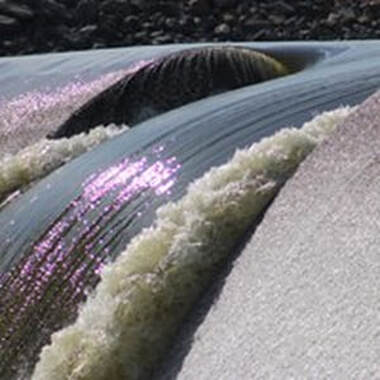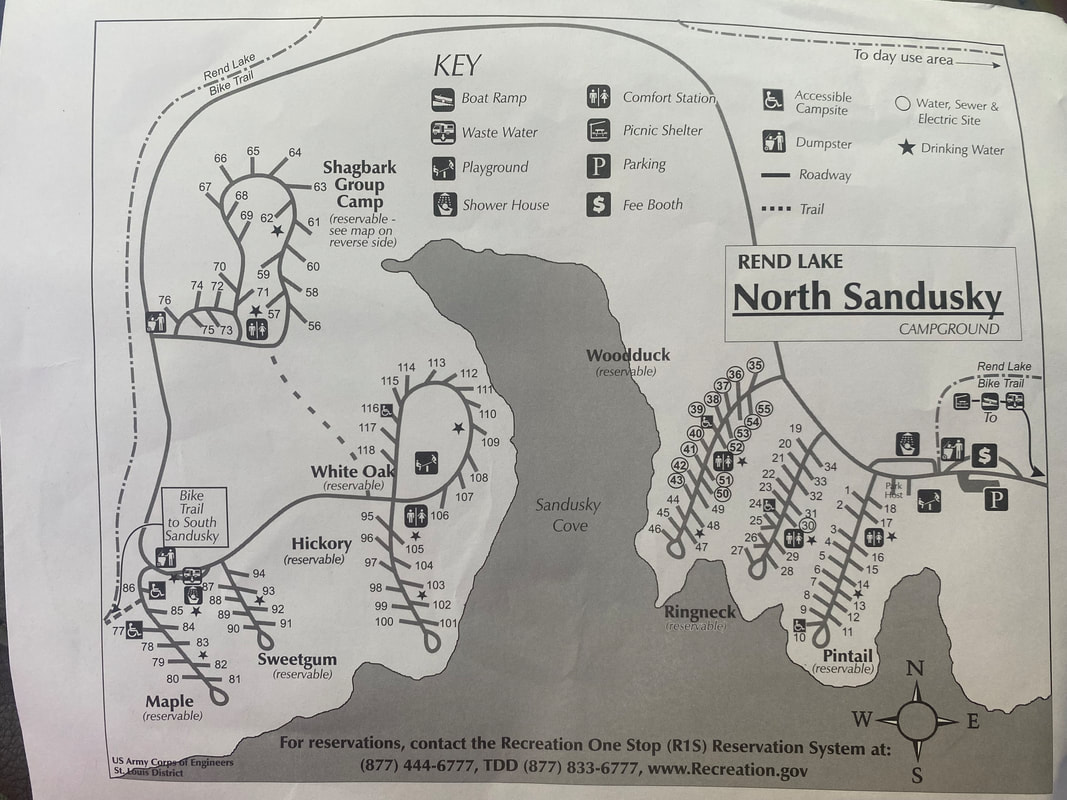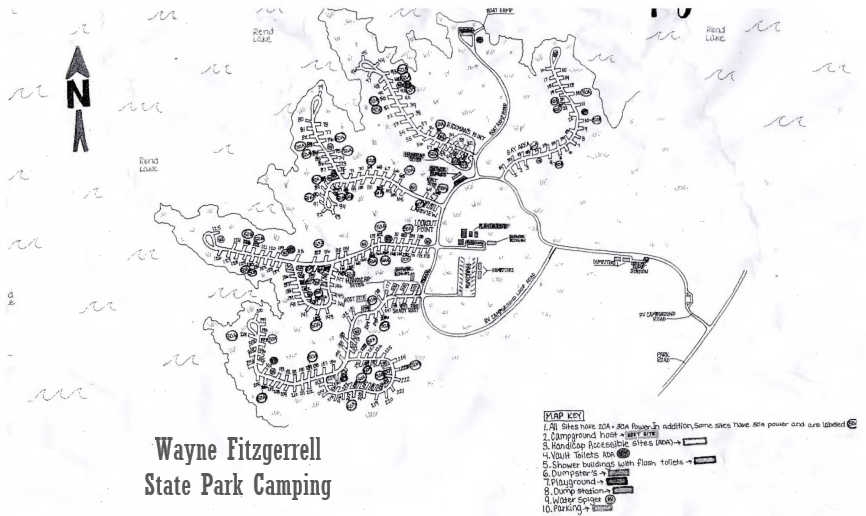REND LAKE … ONE OF THE SEVEN WONDERS OF ILLINOIS
By Joe R. Browning
The period following WW II was, for most of the United States, a period of optimism and prosperity. Allied forces had been successful in defeating two super powers in a relatively short period of time. The economy was on fire and the outlook was optimistic. By all measure, the country had given birth to the great American dream. That was not entirely true in southern Illinois. We were elated and grateful for the victories over the axis powers and anxious to get back to the good life. But, southern Illinois was in the midst of a multi-year drought. And, the water shortage got serious.
The drought had reached from Ohio to Nevada and from Wyoming to Georgia with southern Illinois being hit the hardest. Lake Benton, a 68-acre fish bowl north of town, was our prime source of drinking water and it remained frightening low most of the time. Townspeople and especially the farm community were crying help.
Before long, the crisis caught the attention of Paul Douglas, the senior senator from Illinois who had become a national figure, Kenneth Gray a local star in the U.S. House of Representative, Bert Baker, a workhorse in the Illinois House, Wayne Fitzgerald, a true salesman who was in the Illinois Senate. Local, state and national leaders soon got on board. The powers-to-be realized that a safe and secure water supply was a necessity for the residents in Illinois’ Deep South.
It was in the 60s when that gaggle of powerbrokers took a walk into the briar brushes and chiggers near Rend City, IL and visualized what turned out to become an almost 19,000 acre mecca known nationwide as Rend Lake.
I was a student at Benton Consolidated High School in the 50s when Senator Douglas, a georgist economist, mapped out his plans for a water supply. I remember 1954 as probably the most severe year of the drought in Franklin County. All residents, especially those in the farm community, were struggling with the water shortage.
Fast forward through the 60s and into the 70s. I was an employee of WFRX Radio and vice president of the Benton Chamber of Commerce Board of Directors. The chamber president was Robert Taylor, a former Navy officer who exuded leadership and confidence. In 1972, Taylor asked me to form a subcommittee that would work directly with the businesses in Benton. The Benton Promotion Association (BPA) was the result of that request with its greatest contribution the creation of the Rend Lake Water Festival. Along with Taylor was Jim Knight, an energetic young businessman who owned his own furniture store. The three of us were summoned to a meeting with Larry Foster, manager of the Rend Lake Conservancy District. Foster’s organization had joined with the U.S. Corps of Engineers and the state of Illinois to create the lake. Foster said he needed our help with the formation of the dedication. Taylor told Foster that the chamber would help organize the dedication, but the chamber wanted a festival to be held in Benton. When we left the meeting, Taylor said, “Now we have a real festival.” That night the framework of the BPA was completed and the Rend Lake Water Festival was born. Knight agreed to become the Rend Lake Parade chairman and did such a good job it became perpetual. Every year the parade winds through the streets of Benton.
Other chamber members stepped forward and before long the framework of a festival was complete. Founding members included Howard Payne, president of the Bank of Benton; Stanley Hatchett, managers of Sherman’s Department Store; Doyle Goffinet, manager of P.N. Hirsch; Everett Collins, co-owner of Barton and Collins Furniture Company, Dave Webster, owner of Flowers by Dave and Dave Bauer, Chief Financial Officer for the Bank of Benton. And, there were others, in fact, before the initial festival was launched, almost every citizen in the Benton area got involved. Volunteerism was at its height in the 70s.
While we were creating a water festival, political leaders were moving toward a lake. Through the use of government earmarks, Rend Lake was becoming a reality. There have been a lot of negative press condemning earmarks, Congressional funding directives slipped into major pieces of legislation. Without earmarks, there would be no Rend Lake. Earmarks guaranteed funding and that in turn allowed the United States Army Corps of Engineers to begin work on the dam of the Big Muddy River. The Lake’s authorization was finalized in 1962 and it took another decade for the lake to create a shoreline stretching 162 miles with the average depth 10 feet and the maximum depth 35 feet.
It was 1972 when several townspeople joined local, state and national leaders at the dam site for a day of speeches and celebration. Senator Douglas could not make it due to an upset loss to Charles Percy in the 1966 election. Gray, Lt. Governor Paul Simon, Baker, Fitzgerald and others were in attendance. We knew it was a special time at a special place, but few of us could never have imagined the benefits and recreational opportunities this body of water would deliver. And deliver it has. Eventually Rend Lake brought an abundance of fresh, clean, pure water to the residents in 35 towns and water districts with over 200 miles of distribution lines in seven southern Illinois counties. Over seven million visitors compliment Rend Lake every year to enjoy over 800 campsites and five public camp grounds. Anglers from around the world drag record-size fish from its waters. Recreation on and around the lake is almost unlimited.
Rend Lake has proven that something very good can come out of a very bad situation. The severe drought of the 50s led to the creation of a big body of water that measures three miles wide and 13 miles long. Rend Lake is ours and we are proud of it. As we prepare for the golden anniversary of the dedication of this great reservoir, we acknowledge that it is one of the Seven Wonders of Illinois. Happy golden anniversary, Rend Lake. We need you, we want you and, most of all, and we love you.
Joe Browning is the former publisher of the Benton Evening News, former Benton Township Supervisor and was Benton Chamber of Commerce’s Man of the Year in 1972. He resides in Mesa, AZ. [email protected].
By Joe R. Browning
The period following WW II was, for most of the United States, a period of optimism and prosperity. Allied forces had been successful in defeating two super powers in a relatively short period of time. The economy was on fire and the outlook was optimistic. By all measure, the country had given birth to the great American dream. That was not entirely true in southern Illinois. We were elated and grateful for the victories over the axis powers and anxious to get back to the good life. But, southern Illinois was in the midst of a multi-year drought. And, the water shortage got serious.
The drought had reached from Ohio to Nevada and from Wyoming to Georgia with southern Illinois being hit the hardest. Lake Benton, a 68-acre fish bowl north of town, was our prime source of drinking water and it remained frightening low most of the time. Townspeople and especially the farm community were crying help.
Before long, the crisis caught the attention of Paul Douglas, the senior senator from Illinois who had become a national figure, Kenneth Gray a local star in the U.S. House of Representative, Bert Baker, a workhorse in the Illinois House, Wayne Fitzgerald, a true salesman who was in the Illinois Senate. Local, state and national leaders soon got on board. The powers-to-be realized that a safe and secure water supply was a necessity for the residents in Illinois’ Deep South.
It was in the 60s when that gaggle of powerbrokers took a walk into the briar brushes and chiggers near Rend City, IL and visualized what turned out to become an almost 19,000 acre mecca known nationwide as Rend Lake.
I was a student at Benton Consolidated High School in the 50s when Senator Douglas, a georgist economist, mapped out his plans for a water supply. I remember 1954 as probably the most severe year of the drought in Franklin County. All residents, especially those in the farm community, were struggling with the water shortage.
Fast forward through the 60s and into the 70s. I was an employee of WFRX Radio and vice president of the Benton Chamber of Commerce Board of Directors. The chamber president was Robert Taylor, a former Navy officer who exuded leadership and confidence. In 1972, Taylor asked me to form a subcommittee that would work directly with the businesses in Benton. The Benton Promotion Association (BPA) was the result of that request with its greatest contribution the creation of the Rend Lake Water Festival. Along with Taylor was Jim Knight, an energetic young businessman who owned his own furniture store. The three of us were summoned to a meeting with Larry Foster, manager of the Rend Lake Conservancy District. Foster’s organization had joined with the U.S. Corps of Engineers and the state of Illinois to create the lake. Foster said he needed our help with the formation of the dedication. Taylor told Foster that the chamber would help organize the dedication, but the chamber wanted a festival to be held in Benton. When we left the meeting, Taylor said, “Now we have a real festival.” That night the framework of the BPA was completed and the Rend Lake Water Festival was born. Knight agreed to become the Rend Lake Parade chairman and did such a good job it became perpetual. Every year the parade winds through the streets of Benton.
Other chamber members stepped forward and before long the framework of a festival was complete. Founding members included Howard Payne, president of the Bank of Benton; Stanley Hatchett, managers of Sherman’s Department Store; Doyle Goffinet, manager of P.N. Hirsch; Everett Collins, co-owner of Barton and Collins Furniture Company, Dave Webster, owner of Flowers by Dave and Dave Bauer, Chief Financial Officer for the Bank of Benton. And, there were others, in fact, before the initial festival was launched, almost every citizen in the Benton area got involved. Volunteerism was at its height in the 70s.
While we were creating a water festival, political leaders were moving toward a lake. Through the use of government earmarks, Rend Lake was becoming a reality. There have been a lot of negative press condemning earmarks, Congressional funding directives slipped into major pieces of legislation. Without earmarks, there would be no Rend Lake. Earmarks guaranteed funding and that in turn allowed the United States Army Corps of Engineers to begin work on the dam of the Big Muddy River. The Lake’s authorization was finalized in 1962 and it took another decade for the lake to create a shoreline stretching 162 miles with the average depth 10 feet and the maximum depth 35 feet.
It was 1972 when several townspeople joined local, state and national leaders at the dam site for a day of speeches and celebration. Senator Douglas could not make it due to an upset loss to Charles Percy in the 1966 election. Gray, Lt. Governor Paul Simon, Baker, Fitzgerald and others were in attendance. We knew it was a special time at a special place, but few of us could never have imagined the benefits and recreational opportunities this body of water would deliver. And deliver it has. Eventually Rend Lake brought an abundance of fresh, clean, pure water to the residents in 35 towns and water districts with over 200 miles of distribution lines in seven southern Illinois counties. Over seven million visitors compliment Rend Lake every year to enjoy over 800 campsites and five public camp grounds. Anglers from around the world drag record-size fish from its waters. Recreation on and around the lake is almost unlimited.
Rend Lake has proven that something very good can come out of a very bad situation. The severe drought of the 50s led to the creation of a big body of water that measures three miles wide and 13 miles long. Rend Lake is ours and we are proud of it. As we prepare for the golden anniversary of the dedication of this great reservoir, we acknowledge that it is one of the Seven Wonders of Illinois. Happy golden anniversary, Rend Lake. We need you, we want you and, most of all, and we love you.
Joe Browning is the former publisher of the Benton Evening News, former Benton Township Supervisor and was Benton Chamber of Commerce’s Man of the Year in 1972. He resides in Mesa, AZ. [email protected].
CAMPING AT REND LAKE: www.recreation.gov:

